Some of you couldn’t believe just how bad your favorite websites looked when they started out when we published Proof That Your Favorite Startup Started Out Awful earlier this month.

Based on what they look like now, it’s easy to think they were always worth millions. But the truth is most of us go through an awkward phase.
We thought we’d do part two and show you eight more websites that started off as bad as Marshall Mathers did in 1990.

Match
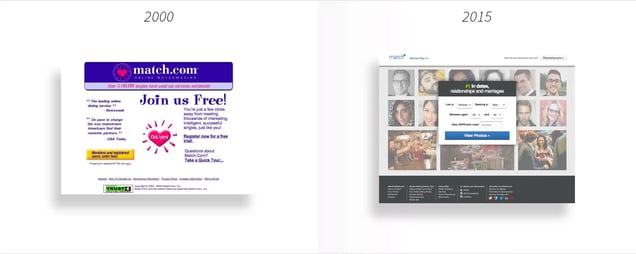
Back when Match.com launched in 1995 as a free beta, online dating wasn’t something people really accepted. No one had heard of it and people weren’t immediately interested. Plus, Match’s first website didn’t help.
Match started as a proof-of-concept for classified advertising systems for newspapers. The initial business was based on a subscription model with a focus on niche market groups, including techies and the LGBT market.
As written in Wired, when Match.com launched, “online personals were seen as terminally tacky – customers faxed in their photos – and venture capitalists were dubious.”
Match sold for $8 million in 1997. A year and a half later, it sold for $50 million. But the website stayed pretty crappy for a long time. Even on January 18, 2002, when it got a little better, it was still bad.
But by 2007 it finally arrived at the “don’t-have-to-be-totally-ashamed-if-someone-sees-me-looking-at-this-website” category.
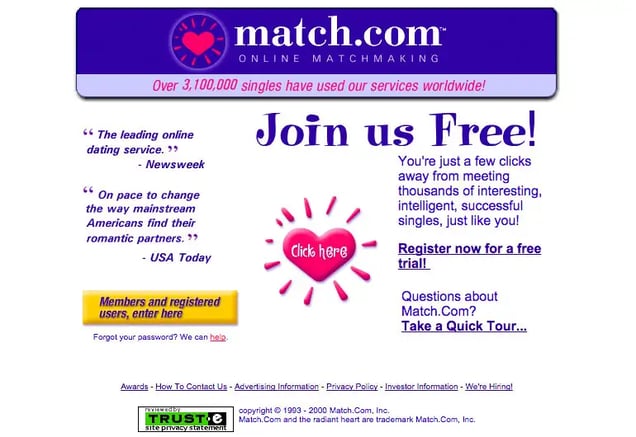
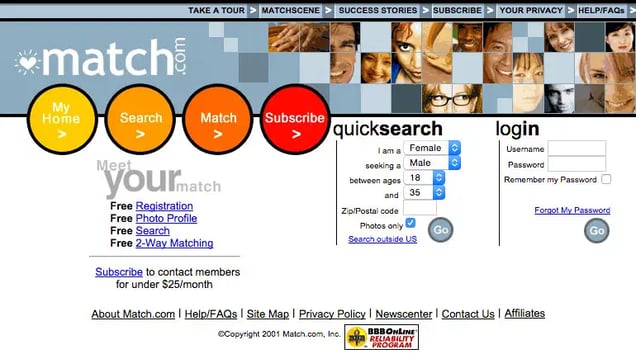
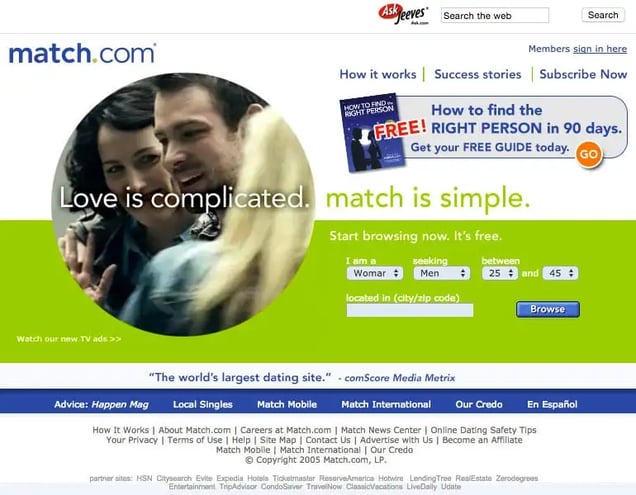
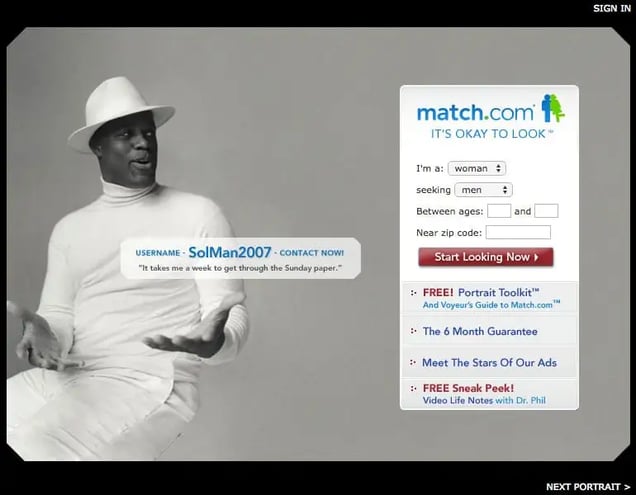
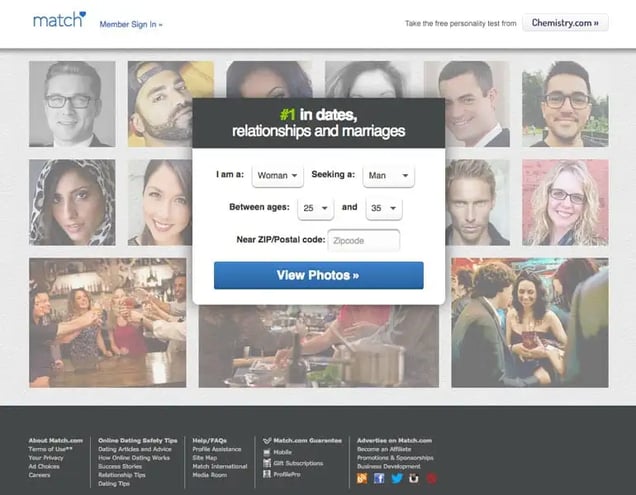
KAYAK
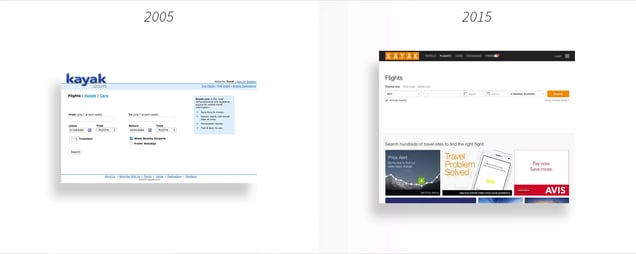
Take a look at KAYAK, everyone’s favorite travel search engine. Priceline acquired KAYAK for $1.9 billion and its app has been downloaded more than 40 million times.
But things weren’t always as glam as a weekend jaunt to the Caribbean. In fact, in 2005, KAYAK looked as janky as a discount Mexican cruise line.
The KAYAK site got better around 2008, just after they raised $196 million in funding. With the funding, KAYAK acquired SideStep, a competing American travel website.
When KAYAK was first incorporated in 2004, they were called Travel Search Company, Inc. Then, in 2011 the company’s official name was changed to KAYAK Software Corporation.
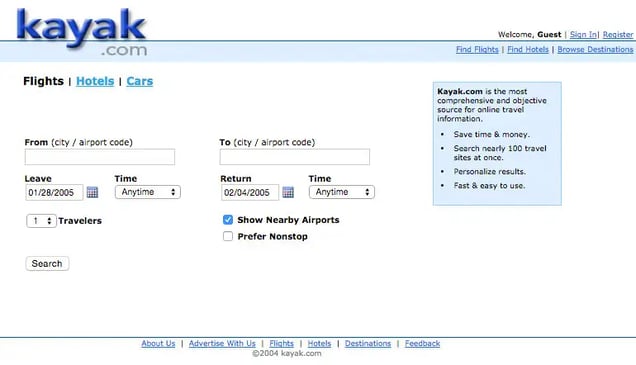
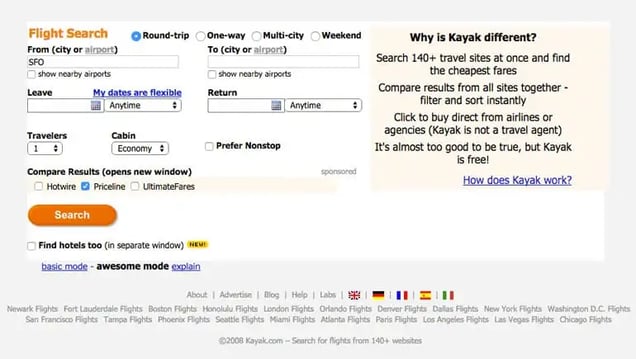
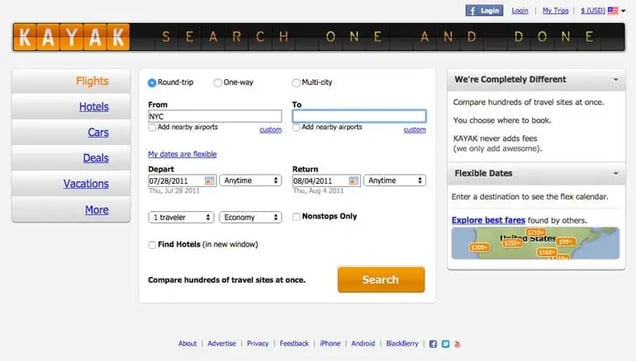
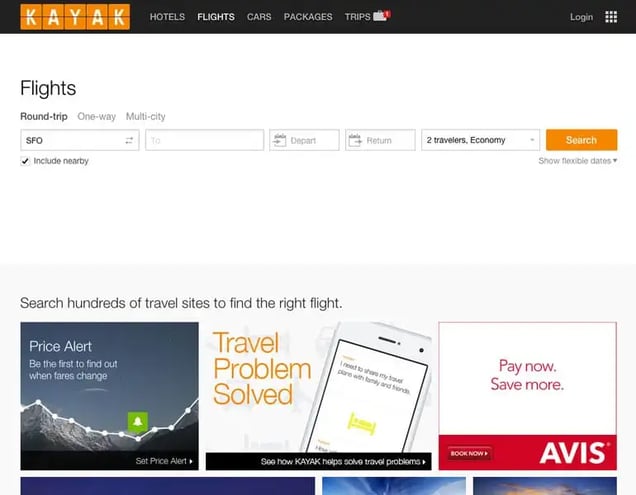
Apple
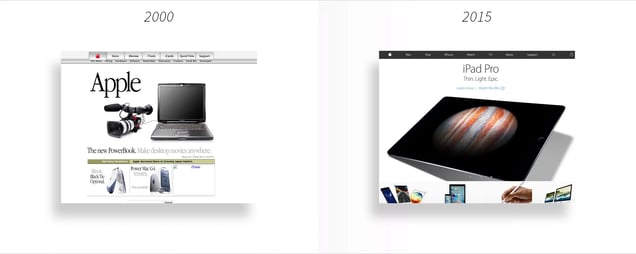
Apple, a brand that has become synonymous with sleek and intuitive design, once looked shockingly clunky and analog.
It’s the kind of thing that makes you remember that even though Apple has blown Microsoft out of the water in so many ways, it has also copied its rival on a lot of products, such as the iPad, and took years to distinguish itself as the brand we know today.
Originally incorporated as Apple Computer in 1977, the company was renamed Apple Inc. in 2007.
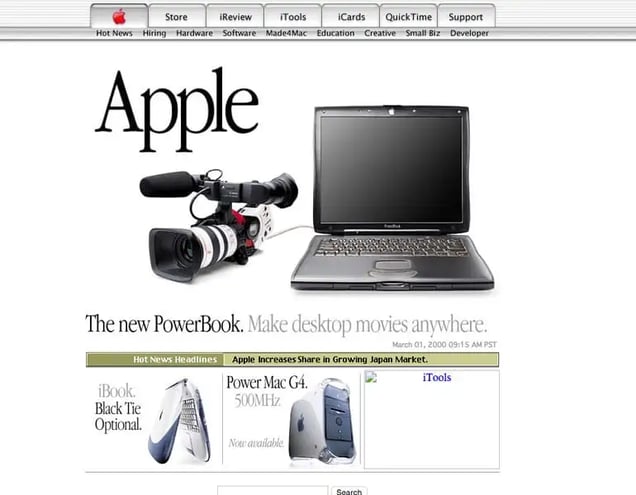
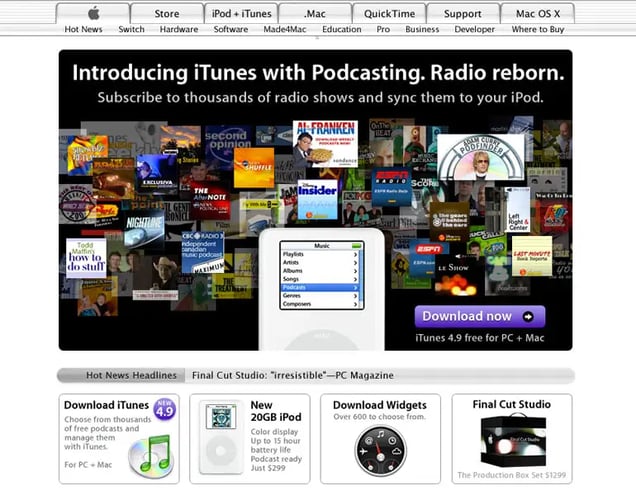
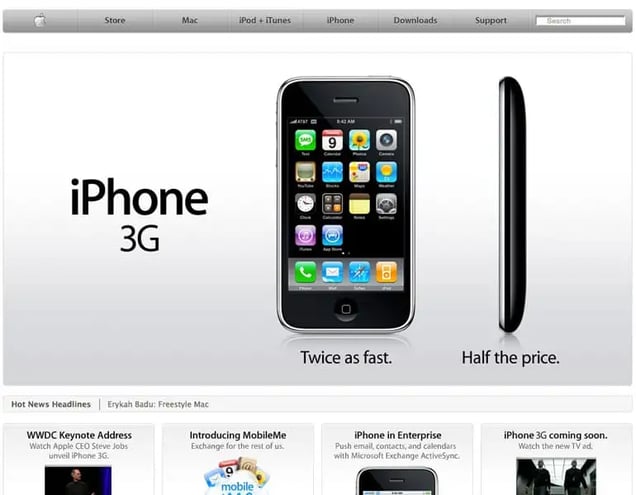


The New York Times

Let’s look at the home of “all the news that’s fit to print.” The New York Times launched its website in January 1994.
Today the site publishes news in real time, keeping up with social media. But back in ’94, it published articles and photos the night of the day the stories came out in print.
Interestingly, the website came out before the paper ever published a color photo on its front page. That came in October of 1997. It was a photo of Tony Fernandez, whose 11th-inning home run propelled the Cleveland Indians into the World Series.
By 1999, NYT was moving closer to the design they use today, but it still looked pretty clumsy.
Now, the Times is combatting revenue loss with a model that allows readers to view 10 articles a month for free, then makes them subscribe to read more.
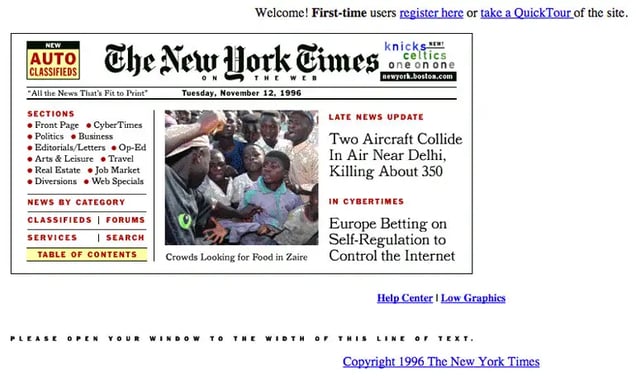
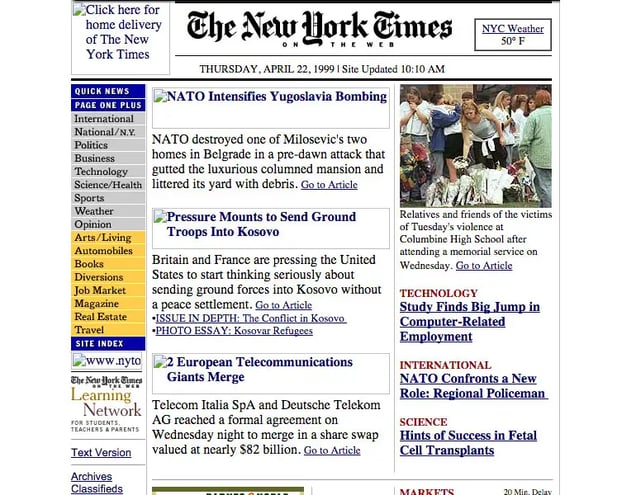
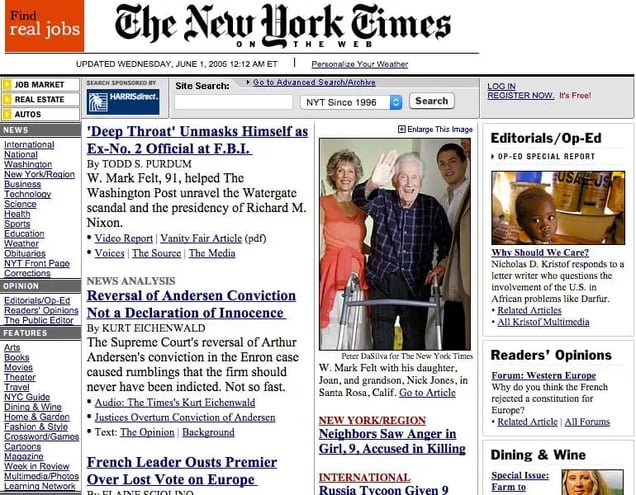

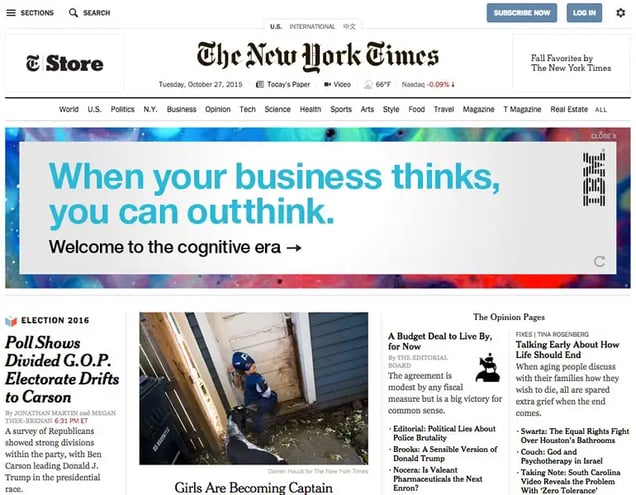
eBay
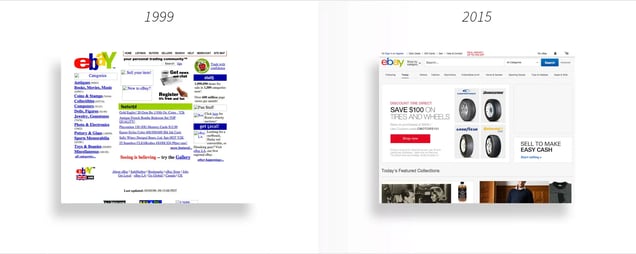
eBay is another great example of a big company with a shockingly simple website. Launched in 1995, they’re currently valued at $34 billion.
Check them out back in the ’90s. It’s shocking that anyone would buy something from a website that looked like this.
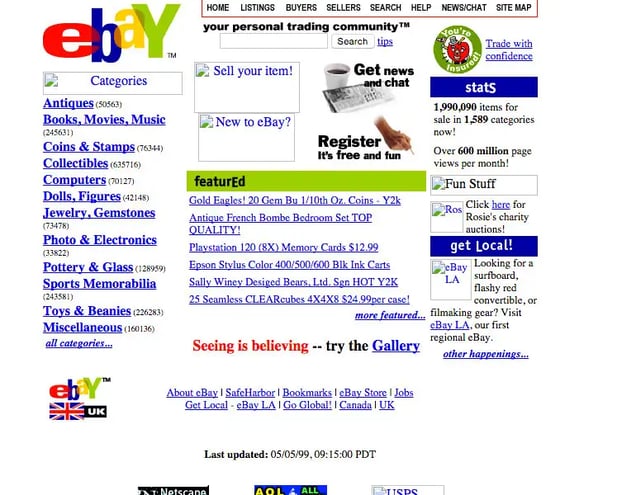
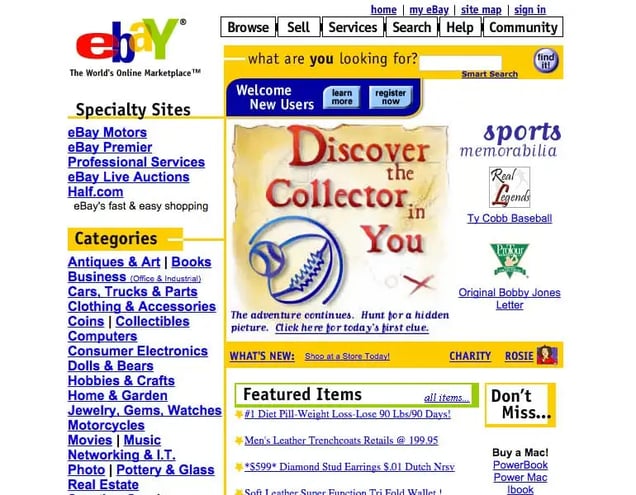

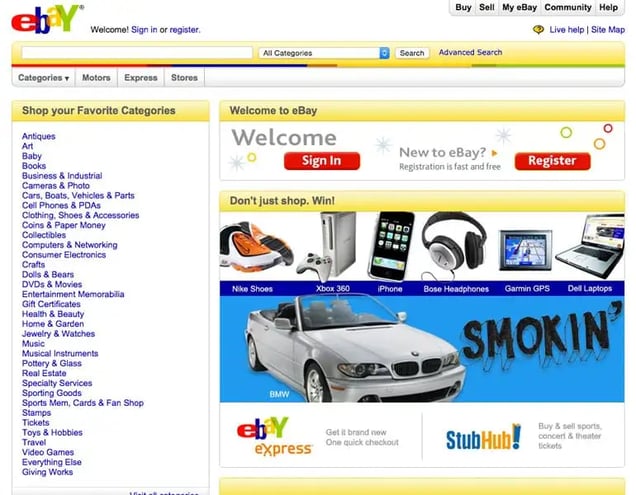
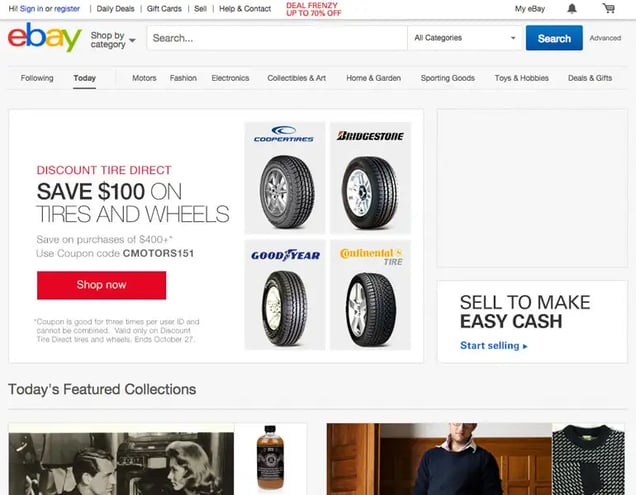
ESPN
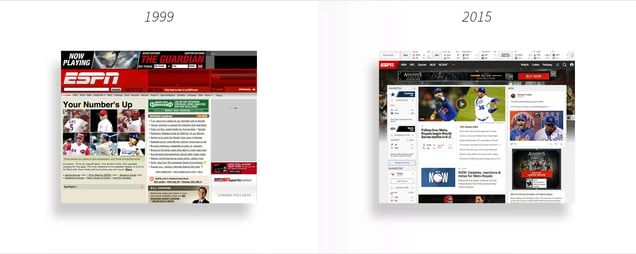
ESPN’s first web page, shown here from 1999, looked like the landing page for a high school football team.
My favorite detail is the ad on the right for Kidflix, “The low-priced family video store.” Remember when video stores were still a thing? The only thing I miss about those days are the Swedish Fish and Snow Caps you could buy at the register.
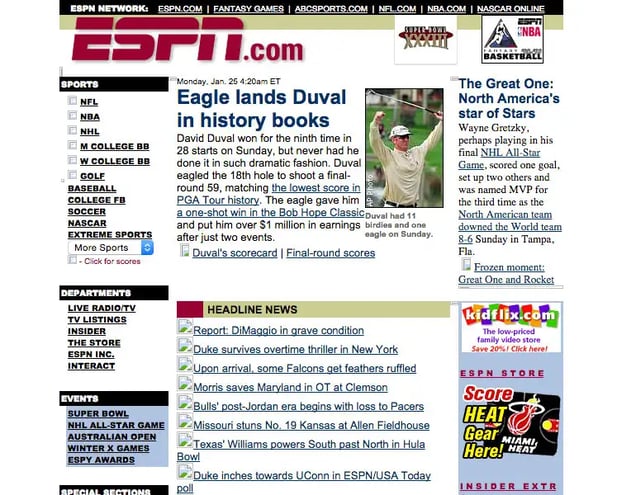
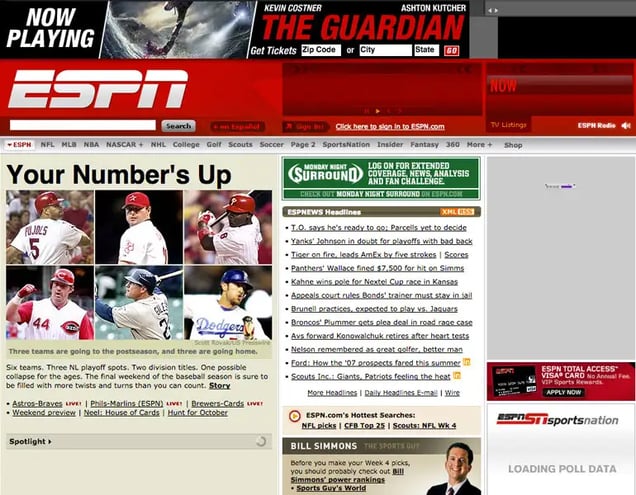
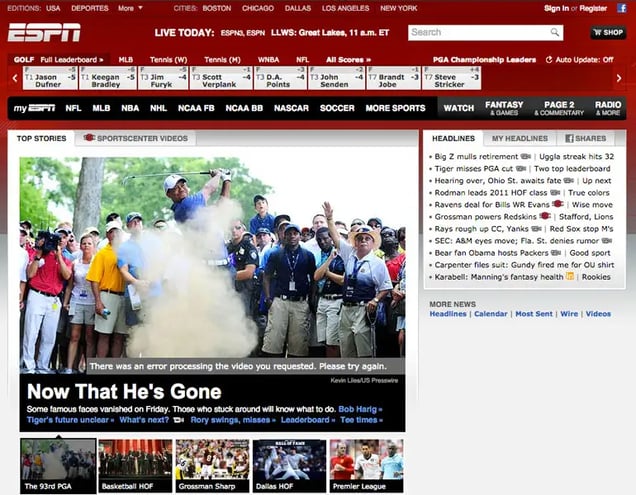
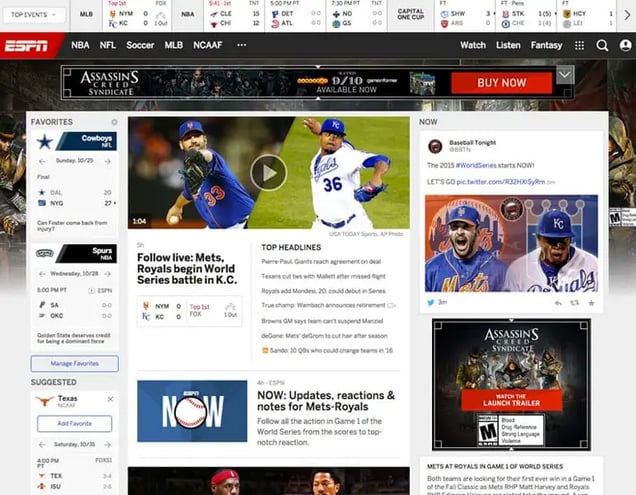
GQ
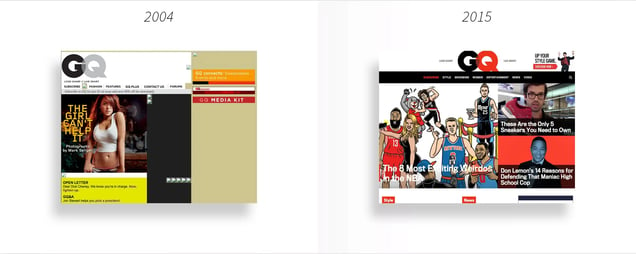
So, I love GQ, but unlike most of the sites on this list… their website still kind of stinks. However, it used to really suck when it first launched.
But I still have to respect a publication that’s been around as long as it has. GQ was first launched as Apparel Arts in 1931. Its popularity spurred the launch of Esquire magazine a few years later. In 1958 it was renamed Gentlemen’s Quarterly.
Beginning in the ’90s, GQ wised up and started putting women on the cover and inside (often in lingerie), just in time for their website a decade later. Because really, with a website this mediocre, how else are you going to get people on there?

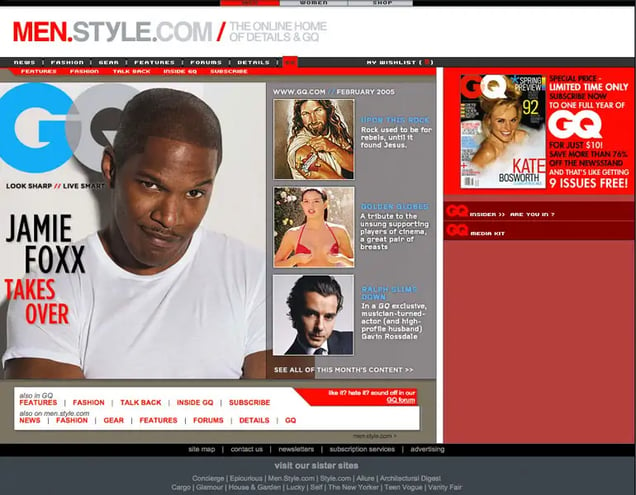
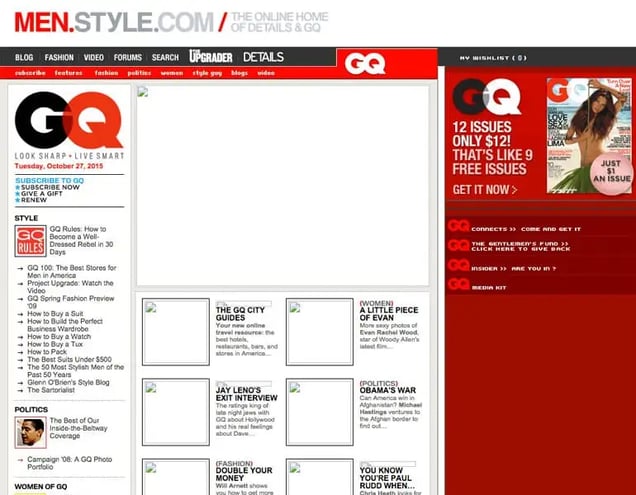
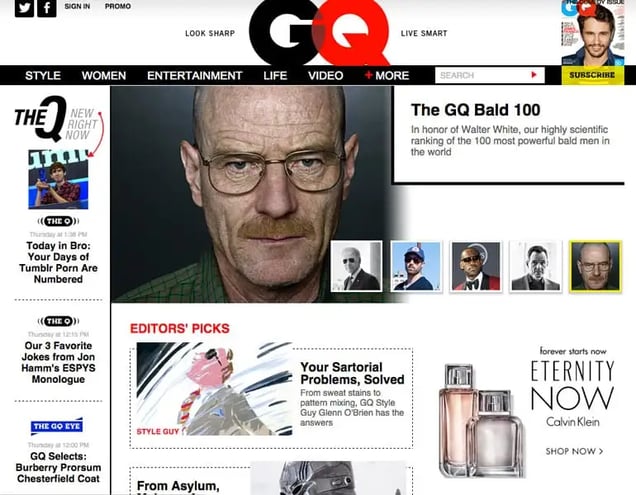
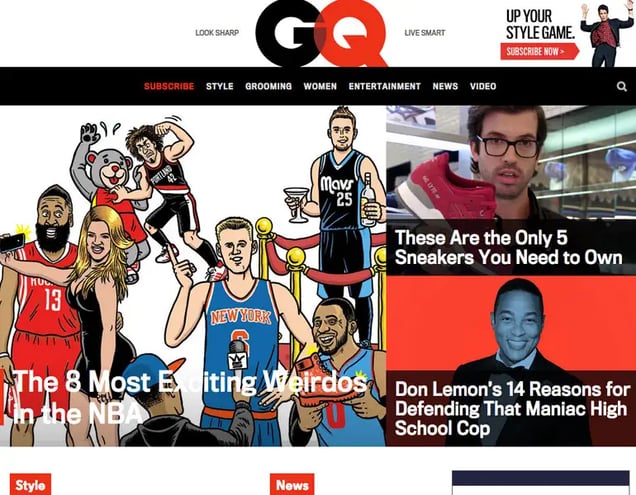
Kickstarter
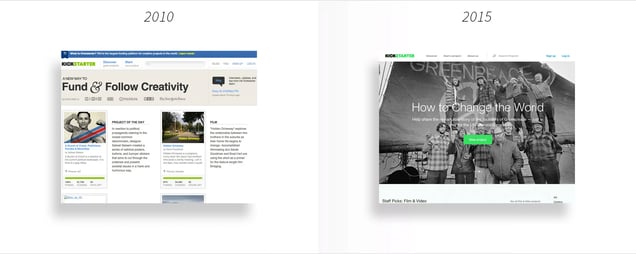
Launched on April 28, 2009, Kickstarter was destined to be the crowdfunding site that helps people find the next big innovative thing. At this point, it has seen 94,683 projects successfully funded, and $2 billion pledged by a global community of 9.7 million people around the world. It has 6,204 live projects.
Although today Kickstarter is known for its hip look, when it first started, it could hardly be considered cool.
The story goes that founder Perry Chen got the idea for the site when he was living in New Orleans in 2001 and wanted to bring a pair of DJs to play in a music festival. He had everything but the money — a venue and the interest of the performers — but it was too much money and never happened. So he founded Kickstarter, which rose from humble beginnings to what it is today in only half a decade.
Take a look:
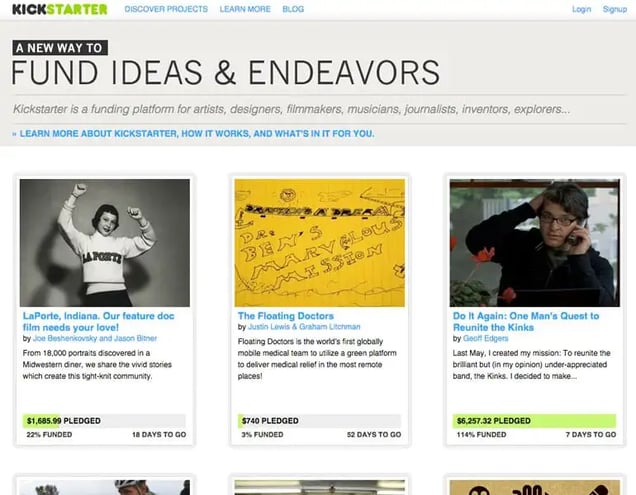
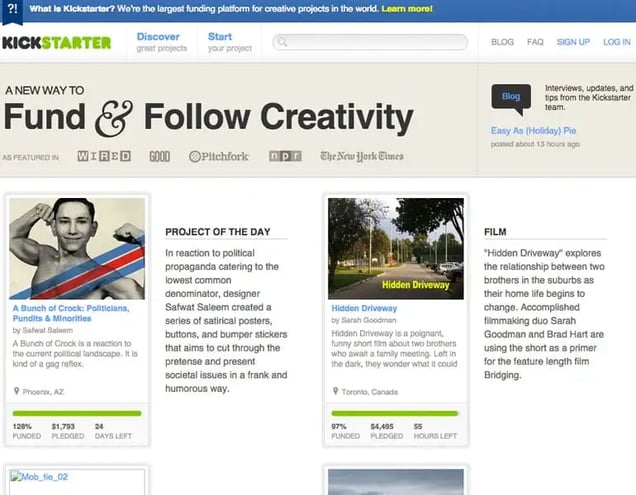
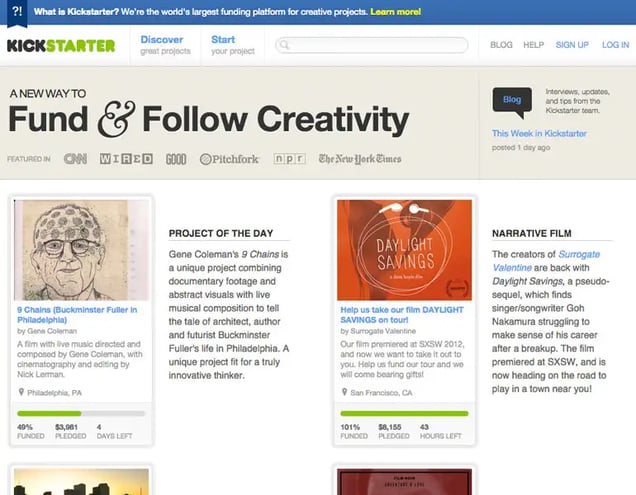

That’s it, folks, we hope this little website bashfest helped you realize just how awesome your own website already is. Even if it sucks.
Want more evolution posts like this one? Enter ye ole email in the box below and like us on Facebook.